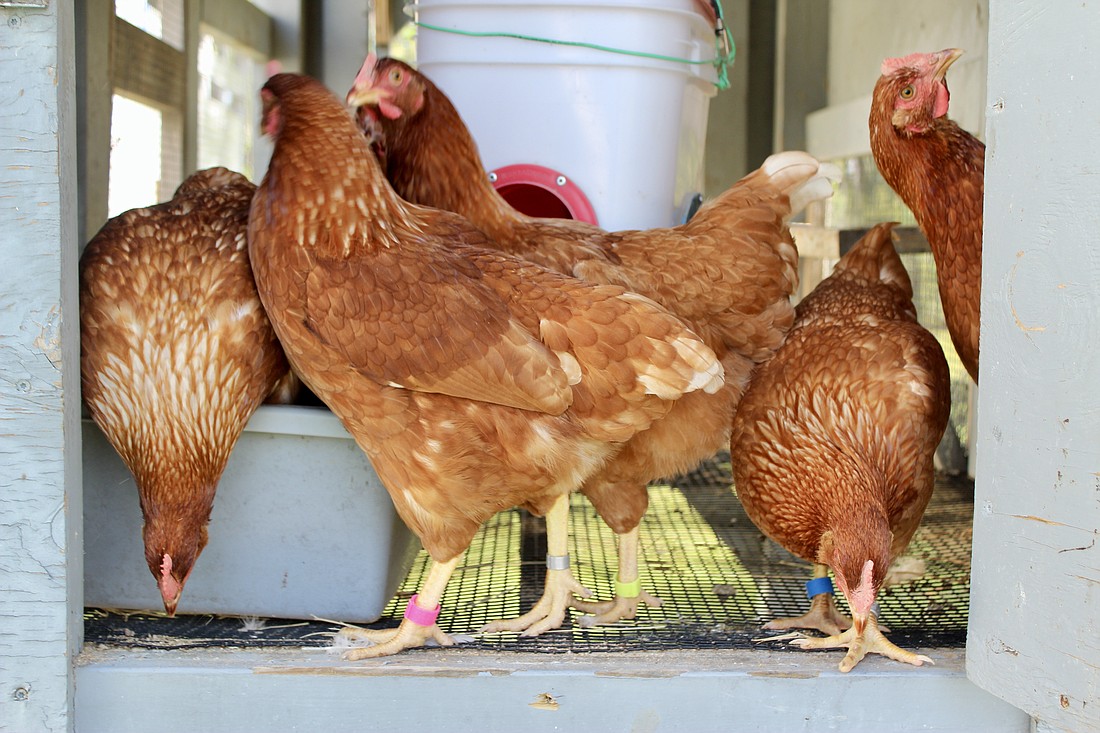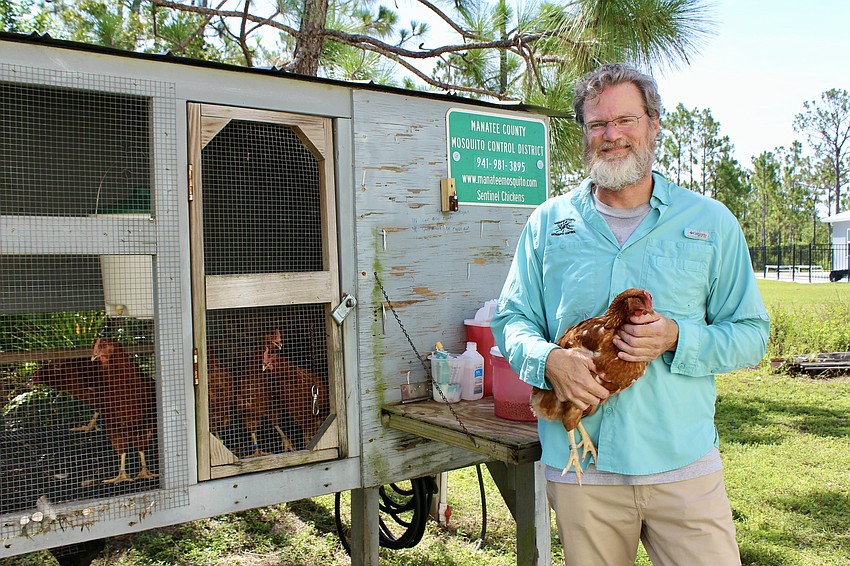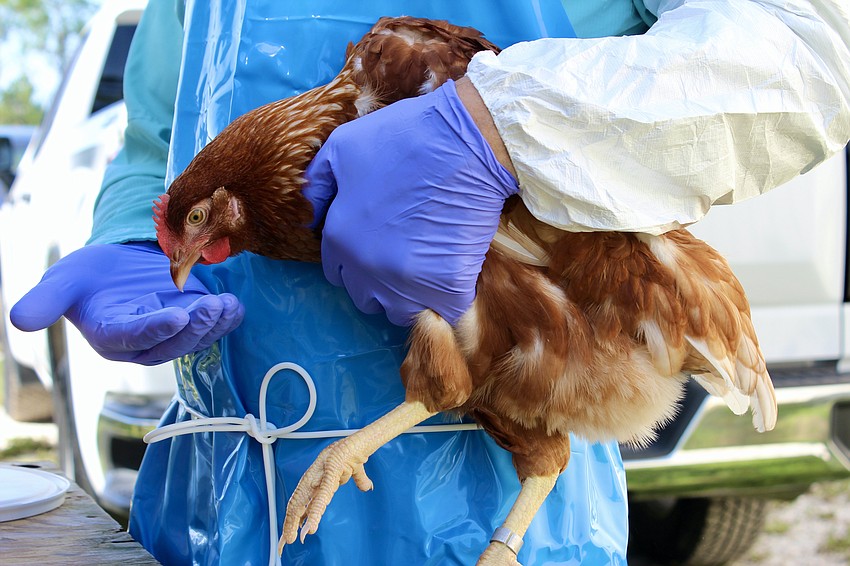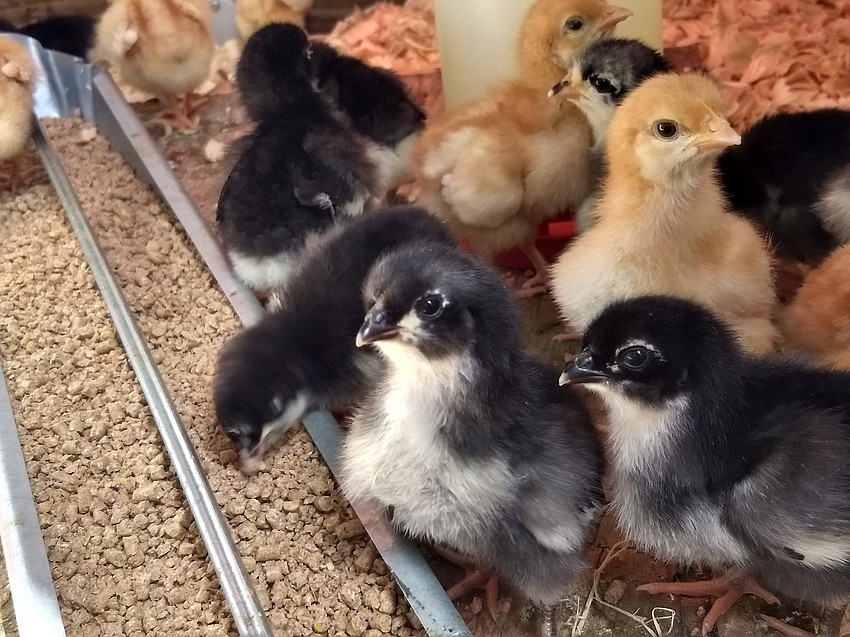- May 5, 2024
-
-
Loading

Loading

Max Dersch described the inside of his white pickup truck as “a combination of a tiny hardware store and a first aid clinic.”
One must be prepared for anything when tending to 11 chicken flocks and their coops. The truck also contained a thermos of dry ice and 7-year-old, rechargeable batteries to put together a mosquito trap on the fly.
As the manager of the Entomology Department at the Manatee County Mosquito Control District, Dersch can differentiate between a mosquito and a midge fly, fix a broken lock, and draw blood from a chicken.
He oversees the Sentinel Chicken Program and the Adult Mosquito Trapping Program. These two programs provide data that guide public notices issued by the Center for Disease Control and determine if insecticide use is warranted.
The chickens are used to monitor three mosquito-borne viruses: St. Louis Encephalitis (SLE), Eastern Equine Encephalitis (EEE) and West Nile Viruses (WNV).

Each flock contains six hens and are strategically placed among different habitats within the county that include coastal areas, pine flatwoods, salt and freshwater marshes, forest wetlands, swamps, residential areas and combinations thereof.
“There’s a different suite of mosquito species depending on what habitat you’re in,” Dersch said.
There are 90 mosquito species in Florida, 53 of which are typically found in Manatee County.
The trapping program uses dry ice because it’s carbon dioxide in a solid form. There are 59 baited traps throughout the county.
“It’s less expensive for us to use dry ice rather than renting compressed CO2 gas in cylinders,” Dersch said. “CO2 is how mosquitoes find us primarily. Same goes for any animal, whether it’s birds or cattle. They hone in on our exhalation, and they can pick that up about 100 yards away.”
While not much bigger than a soda can, Dersch said the canisters, only half full, can collect about 30,000 mosquitoes. Samples collected provide “close to a real-time assessment of mosquito populations” and allow the district to hone in on which areas need attention.
“By law, we can’t go out on a whim and apply adulticide. We have to have some evidence backing the issue up,” Dersch said. “If we get a complaint, and the person is saying ‘I’m getting bit at this time’ and our inspector doesn’t find anything, there’s not much we can do. But if we trap there and we get a lot in that trap, then the complaint is founded. We can do an application.”
Mosquitos were a problem long before chickens and dry ice were a solution.
“Various Spanish, English and French accounts tell of mosquito abundance sufficient to force early explorers to sleep on the beach and cover themselves with sand,” a 2018 Florida Coordinating Council on Mosquito Control report reads. “In Jacksonville, with a population of 26,800, the 1888 (yellow fever) epidemic killed 400 people, sickened 5,000 people and caused 10,000 people to flee the city. Of the 16,400 people remaining in the city, 14,000 citizens were left unemployed as a result of the breakdown of commerce.”
While the Jacksonville example took place over a century ago, it illustrates the point of how long mosquito control has been essential to a healthy economy. A breakdown of commerce in modern-day Florida is a hit to the agriculture and tourism industries.
The report says the economic losses in Florida were not well-documented, but an outbreak of SLE in 1990 is likely to have caused millions of dollars of direct and indirect losses.
An earlier outbreak of SLE in 1977 caused Manatee County, along with 10 others, to start sentinel chicken programs in 1978. Sentinel is not the breed of chicken, it’s referring to the job they perform as guards or look-outs.
The breed Manatee uses now are red star chickens, but that came from years of trial and error.
“These have become our favorite breed. They’re just inquisitive and brave. They’re easy to handle whereas other breeds can be really flighty and spastic,” Dersch said. “In this situation when we’re doing blood draws once a week, we’re really looking for breeds that are calm for themselves as well as us because you’ve got a hypodermic needle in your hand. You don’t want a twitchy, spastic bird.”
First, the district started with white Leghorns, which were then nicknamed the “crazy birds,” so they moved on to buff Orpingtons, which are calm but too big to handle. Dominique chickens became the standard until the COVID-19 pandemic interrupted their supply and red stars became the new standard.
The chickens can only be put to work for a year and a half max. A year is the average because as they age, their blood chemistry changes and their test results become unreliable.
Blood is drawn weekly and sent for testing at the Florida Department of Health, Bureau of Public Health Laboratory. Dersch said one chicken testing positive is background information, but if half the flock tests positive, that’s a benchmark that will get the state’s attention for safety reasons.

Chickens are the ideal animal for this kind of detection because they’re “dead end hosts.” Not only will they not show signs of illness when infected, they don’t transmit the virus to handlers or each other.
“There are other methods that are coming up, and maybe in the future, sentinel chickens will be obsolete,” Dersch said, “But right now, they’re still the best way of finding out when the mosquitos are actively transmitting arthropod borne viruses.”
The only reason an infected chicken is forced into early retirement is because they’ll keep testing positive. The viruses have no impact on the chicken’s eggs or meat, so after a few weeks, even an infected chicken can be safely put up for adoption. There’s a waiting list of about 30 residents who have predator-proof accommodations ready to take them in.
The chickens are mainly kept cooped during their service year because, datawise, they’re hard to replace if one gets scooped up by a hawk. Each chicken is tagged and numbered. Introducing only one to a flock causes problems because the others will peck at the outsider.
“Once they’re done with their year, they go by and large to free range homes,” Dersch said. “I don’t know anybody that keeps them in a coop.”

The district starts raising them on site in a walk-in coop at its Palmetto office. They’re raised from day-old chicks. When about 16 weeks old, they can be put into service.
The staff becomes friendly with the flocks. They often bring leftovers from home. A half eaten head of cabbage is a real treat. Dersch will string rope through it and hang it in the coop for enrichment. But superstition prevents them from naming the chickens. They use a color-coding system instead.
“When a little chick just takes your heart because it’s so cute, something bad’s going to happen to it,” Dersch said with a laugh.